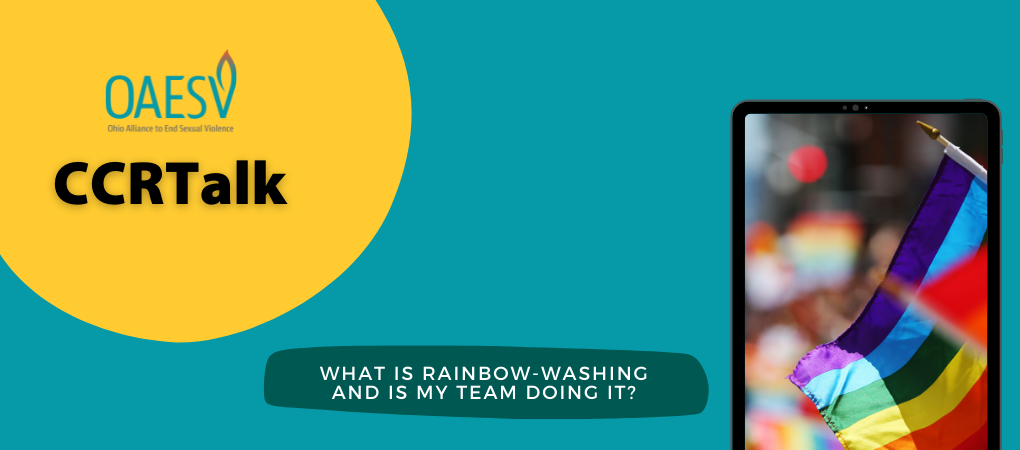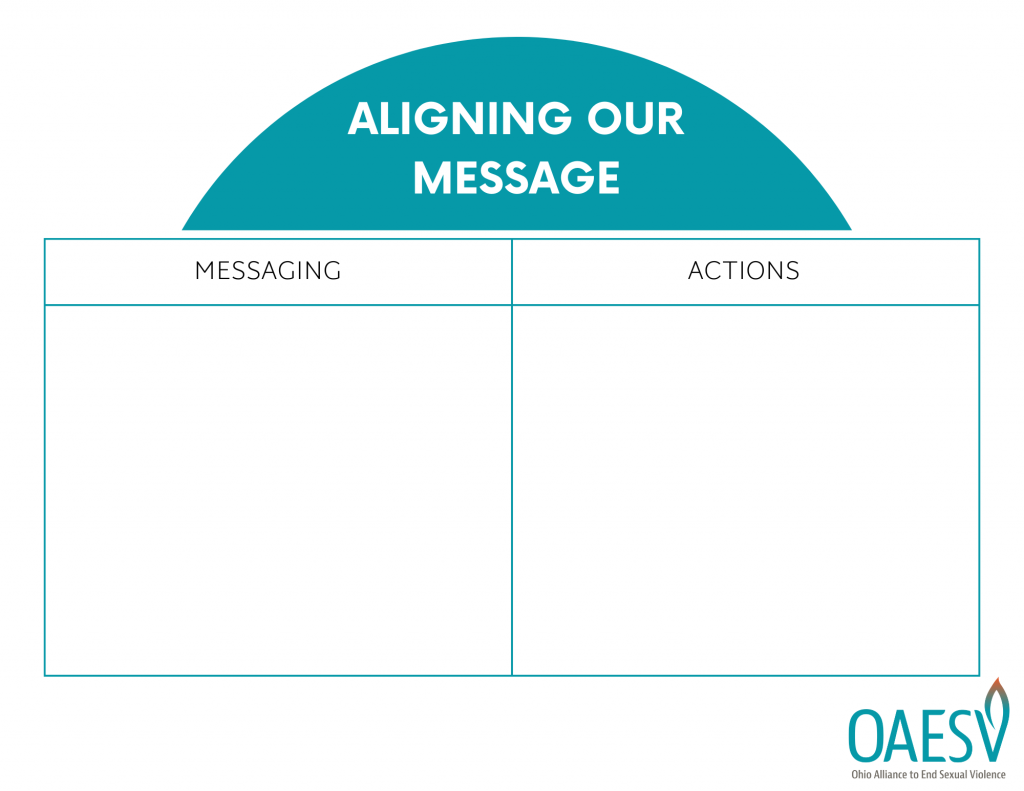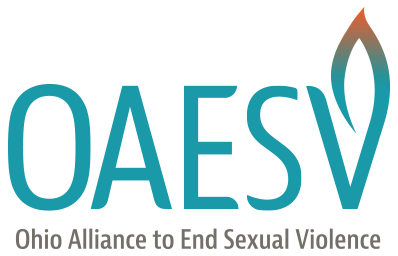
What is Rainbow-Washing and Is My Team Doing it?
We are in the midst of June. We might be posting about Pride and tabling at our local Pride events. It’s the perfect time to talk about what rainbow-washing is and think about what it means in our teams.
Rainbow-washing is typically when brands, institutions, or corporations market using rainbows and other LGBTQIA+ symbols and messaging, without actively supporting LGBTQIA+ folx. Often, they are actively harming the LGBTQIA+ community through donating to anti-LGBTQIA+ initiatives.
But that’s corporations, that’s not us…right? While we may not actively be making a profit out of rainbow-washing, we may be rainbow-washing in our programs and teams in ways we don’t realize. As an example, I’ve been guilty of rainbow-washing in my work.
Content warning about some harm that I’ve caused and trauma caused to LGBTQIA+ folx
When I worked in program development, I wanted all survivors in our community to know they could access our services and that we serve all survivors. In theory, a good thing, right? I added rainbow logos to our materials, and promoted at trainings and meetings that we served all survivors. However, what I hadn’t done before slapping rainbows on making sure everyone was thoroughly trained and vetted staff on cultural competency, partnering with LGBTQIA+ run organizations, or assessing what resources and referrals in the community were safe and unsafe. As a result, folx were misgendered, dead names were used, support group curricula all said “For Women” bold on the cover, and services were delayed while we took time to vet resources.* LGBTQIA+ folx were not given the level of service of their straight counterparts, something that likely caused additional trauma.
Ultimately, this is what rainbow-washing is. It’s putting up a flag, posting for Pride, or otherwise naming yourself, agency, or team as a safe space for LGBTQIA+ folx without actions fully matching that message. While we might not be companies making a profit or actively trying to harm the LGBTQIA+ community, promoting our services with a rainbow or posting for Pride might sometimes cause harm. We might have great intent and genuinely want to support LGBTQIA+ folx and we’ll explore what we can do to align intent and action on our teams.
I like to learn from my mistakes and let my mistakes serve as an example of what we can avoid repeating. If we look at the scenario above as a case study, there are a few things that could be done differently.
There are a few different options to start, but if I were to work on LGBTQIA+ competency with an established team today, here are some of the steps I would likely take:
- Referrals. What would have caused less harm in this situation would be to acknowledge that we weren’t competent or ready to serve LGBTQIA+ survivors, especially trans and gender non-conforming survivors and identify spaces that are competent and safe to refer to. Formalizing these referral processes through an MOU, protocol, and participation in the response team would be ideal. Additionally, if referrals are not sexual violence specific, working collaboratively to address both sexual violence and LGBTQIA+ competency may be helpful.
- Budget. I know firsthand in rape crisis work that budgets are tight. However, we need to prioritizing equitable budgeting in our programs. Budget for consulting fees for trainings, consulting, and other support from culturally-specific organizations. People who are providing their time, knowledge, and experience should be equitably paid. Additionally, nonprofits have typically been spaces that have harmed and inequitably paid LGBTQIA+ and people of color, so in my experience hiring consultants is a way that people can be directly supported in doing work that doesn’t harm them. This is also mutually beneficial, as we can get the most authentic and best assistance from people who are not being harmed and who are paid equitably.
- Identifying LGBTQIA+ organizations. I would want to start identifying consultants around LGBTQIA+ diversity, equity, and inclusion as well as continuing to identify and vet groups or organizations* to cross-refer.
- Assess and adapt. With the aid of consultants, I’d want to assess the competency and readiness within the team, arrange trainings, review and revise protocols, and continue to assess.
- Expanding the team. As we know, there are many people in survivors lives who can help or harm. Continuing to seek out partnerships, team members, and survivor councils who serve and are representative of our communities, such as LGBTQIA+ consultants, organizations, or survivors is vital to adequately serving every member of our community. To ease collaboration, it’s also helpful to identify ways to keep members safe. For instance, allowing anonymous participation, asking members what pronouns and conversations feel safe and unsafe in particular settings and how to support (e.g., a Gender Non-Conforming member may use they/them pronouns with people they know as safe and comfortable but may prefer to use he/him pronouns in a rural SART meeting for their safety).
- Being proactive. I would also want to be proactive in my community partnerships and resources. I would much rather be able to fully inform a survivor and provide options rather than try to figure out in the middle of a crisis call whether an option is safe or not. This includes reaching out to providers, asking questions, and assessing if they are LGBTQIA+ safe; including expectations for competency and humility in our formal agreements, such as MOUs or protocols (e.g., honoring pronouns, expectations for medical exams such as not assuming genitalia or gender identity, properly assessing aggressors, considerations for not outing someone); having conversations on our teams about how we can provide best practices to LGBTQIA+ survivors; and formalizing conflict resolution strategies (for instance, if someone from a team member’s agency says something inappropriate to a survivor, what are the team’s agreed upon steps?).
While this is typed out as a list, it’s not a start to finish process, but needs to be an ongoing process of collaboration, accountability, assessment, learning, and creating the culture shifts in our communities that make them safe and supportive. Once we’ve established that our team has an appropriate level of cultural competency and humility, we can then start adding rainbows. But as we’ve established, rainbows don’t always mean safe. What we learned from our community forums is that naming specifically who your program is safe and meant for can be helpful. For instance, not all spaces that say LGBTQIA+ on them are safe for trans folx, so naming specifically if a space is safe for trans individuals will help clarify any uncertainty.
What might your team do in this scenario?
Be sure to share any thoughts or what’s worked for your team. Feel free to also use the worksheet below. Write down your teams’ current messaging and actions and see if they align. Then explore what actions your team can take.

For more in-depth education and resources on this topic, check out EckCo and register for the upcoming training, Creating Community – LGBTQ+ Cultural Humility in Practice, offered June 23-24 and July 20-21.
*A note about vetting resources: It is vitally important to vet all referrals for LGBTQIA+ folx as conversion therapy practices can be covert and use predatory marketing. Additionally, spaces that are safe for some LGBTQIA+ identities may not be safe for all LGBTQIA+ identities.
